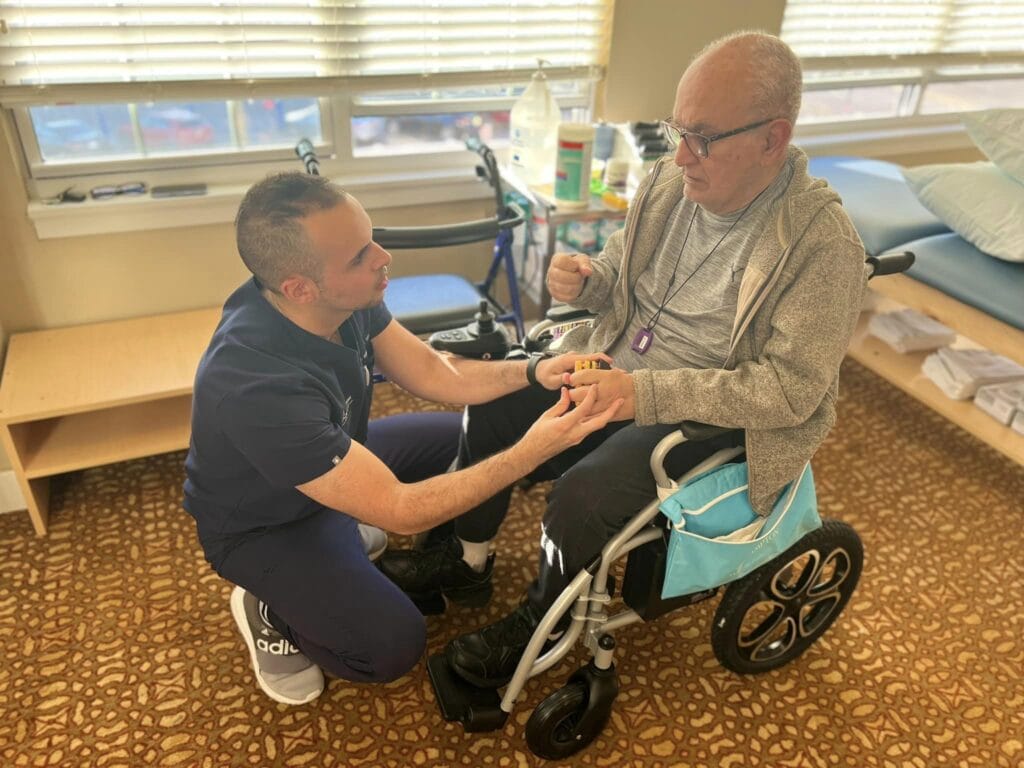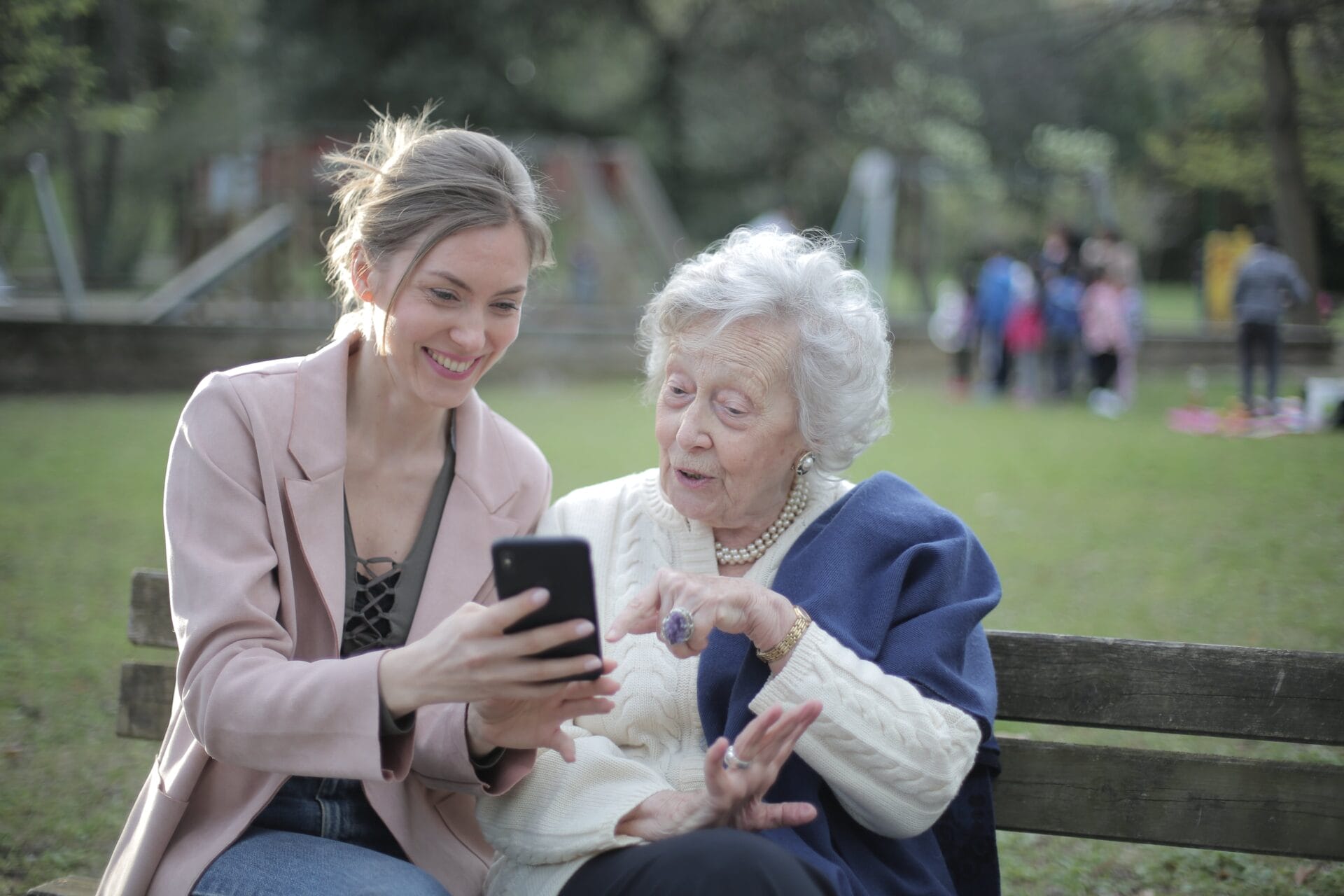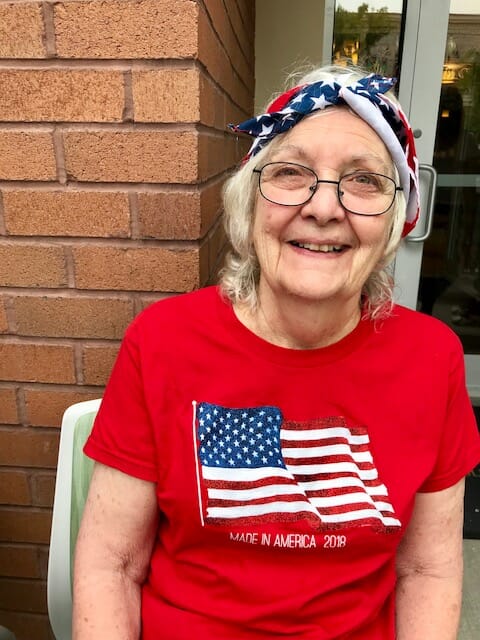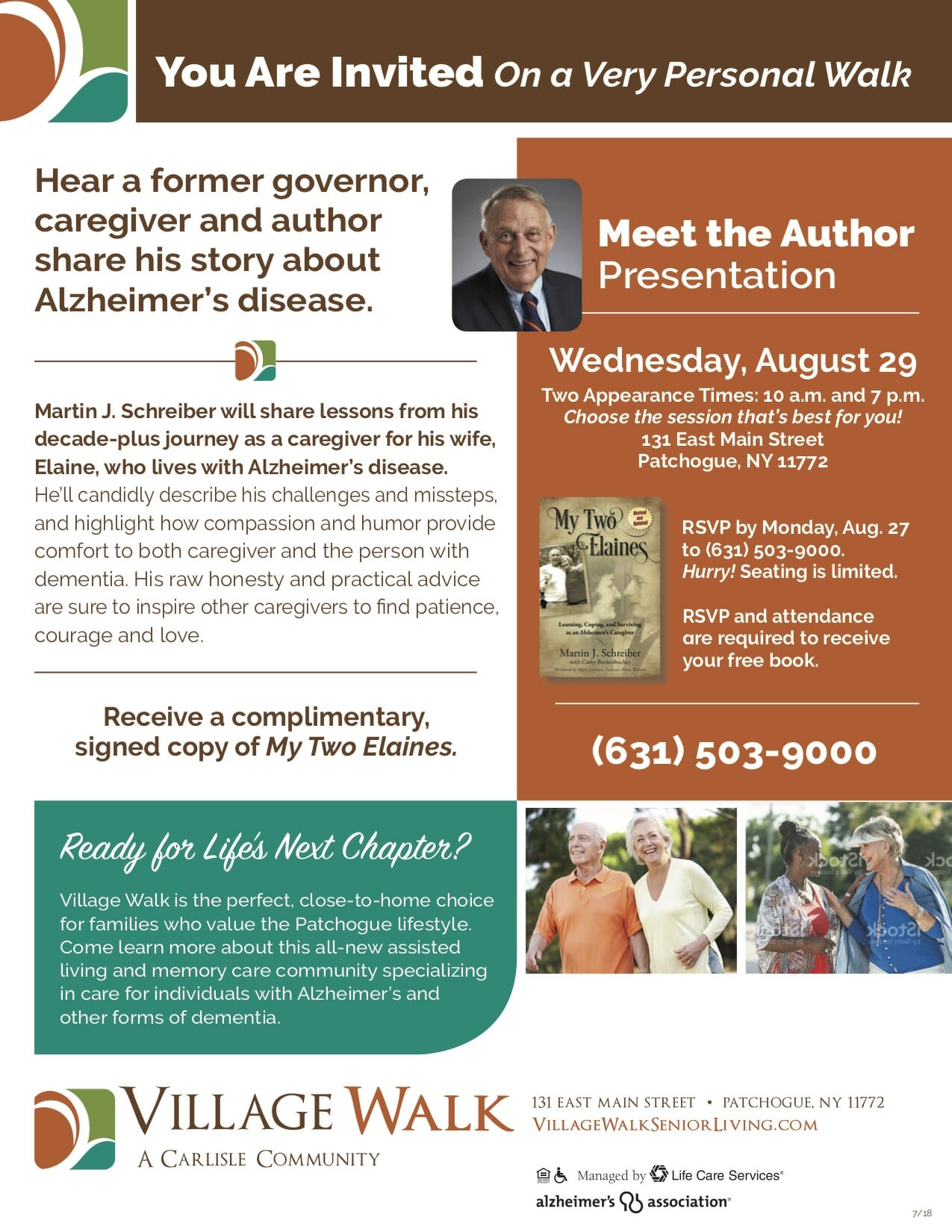Choosing assisted living is a huge undertaking. While you may know that you or your loved one could use extra care, finding the right level of care isn’t always as easy as it looks.
After all, choosing the right care situation — one that includes quality care without sacrificing independence, freedom, and privacy — is challenging. With so many different facilities and care programs to choose from, no wonder the decision can be daunting and downright confusing.
We’d like to be the solution for you. Welcome to Village Walk.
For almost a decade, Village Walk has been Patchogue, New York’s preferred provider of quality assisted living care. We’ve proven we have the right combination of experience and knowledge to help seniors navigate the five levels of assisted living care.
If you’re wondering what’s included in the 5 levels of care in assisted living and at each level of care of assisted living, look no further. We offer thoughtfully designed suites with flexible personal care plans that can change as your needs change.
With us, we help residents live the life they want, so they can continue to pursue their passions on their terms.
We’ll discuss what each of the five levels of care is in assisted living to help determine whether assisted living is right for you or your loved one.
Let’s walk through the five levels of care in assisted living together.
Key article takeaways
- The five levels of care in assisted living refer to the support an assisted living resident needs to live a comfortable, happy, and healthy life.
- Level one of assisted living is for senior citizens who need little to no help. Level five of assisted living is for senior citizens who need the most help.
- Many assisted living facilities provide medical support, activities of daily living (ADLs), medication administration, cooking, housekeeping, and opportunities for socializing. With our person-centered staff, assisted living residents receive help with bathing, dressing, grooming, medication management, and much more.
- The cost of assisted living is proportional to the amount of care residents receive.
The five levels of care in assisted living
Before unpacking the five levels of care in assisted living facilities, we’d be doing you a disservice if we didn’t explain what assisted living is.
Assisted living refers to a variety of services and care offered to senior citizens. From help with activities of daily living (ADL) to physical rehabilitation to mobility support, assisted living encompasses holistic senior care.
Older adults looking for help with housekeeping, dressing, bathing, cooking, taking medications, or socializing can receive quality care and supervision from a skilled assisted living staff member.
Assisted living care can range from zero help to full-time help. For example, with Village Walk, we hold events that teach residents how to best care for their health needs. The following sections will explore what the amount of help — organized by level of care — looks like in practice.
Level one: no assistance needed
Residents in the first level of assisted living care require hardly any (if any) assistance from assisted living staff. Many residents in level-one care don’t have serious health complaints and don’t often need advanced medical treatment.
Older adults in level one engage in social activities with minimal help. Residents receiving level one care live with a high degree of freedom, autonomy, and independence.
In general, level one care looks like that of the care offered at an independent living facility.
Level two: low assistance needed
As levels of care increase, so does the amount of care provided. In level two, assisted living residents tend to have minor impairments or health problems.
Many seniors can perform most of their activities of daily living (ADLs) but may need gentle reminders to do so. In level two, residents receive little help with housekeeping and social activities.
Level three: moderate assistance

In level three, many residents can’t manage life without some help. These residents tend to be more vulnerable in emergencies.
At this care level, caregivers provide cues and reminders to perform ADLs. Caregivers offer help because residents may not move, talk, or remember events as quickly.
Residents may also experience cognitive decline, have reduced physical mobility, and have diminished sensory awareness. Senior citizens receiving level three care often also need extra support and motivation to engage in social activities.
Residents may also need more hands-on assistance than in levels one or two.
Level four: high amount of assistance needed
In level four, caregivers provide varying levels of care and services for seniors. Most seniors needing level four care need help with basic activities, such as bathing, dressing, grooming, and other light ADLs.
Some residents also receive help with meal preparation and medication management. In senior living communities offering level four care, residents tend to have more health complications and memory impairments. Residents at this level also often need more encouragement to take part in social and recreational activities.
Level five: full assistance with daily living activities

Residents in level five require comprehensive, specialized care. Whether getting out of bed, taking medications, making meals, or dressing, seniors using level-five care need help with most tasks.
Many residents at this level may have dementia or Alzheimer’s, and many need care for pre-existing medical conditions.
A senior receiving level-five care might have many caregivers for various complex medical conditions. Residents’ ability to socialize may be limited. Senior citizens receiving level five care may need more help to do so.
Breaking down assisted living by level and factor
| Area of Concern | Level 1 | Level 2 | Level 3 | Level 4 | Level 5 |
| Help needed with ADLs | None | Low amount of assistance | Moderate amount of assistance | High amount of assistance | Full assistance needed |
| Help for medical concerns | Almost no assistance needed | Small amount of assistance needed | Low amount of assistance needed | Moderate amount of assistance needed | High amount of assistance needed |
| Cognitive decline or impairment | Non-existent | Very Mild | Mild | Moderate | Severe |
| # of caregivers present/needed | 0 or 1 | 1 | 1 | 1 or more | 2 or more |
| Socializing | Fully able | Fully able | Able but requires reminders | Somewhat able and needs help | Limited or unable to socialize |
“This place is amazing.” – Marie G.
“I visited this facility with my coworker to volunteer and every single faculty member I encountered was treating the residents with kindness, care, and respect. The Director of Life Enrichment was kind enough to give us a tour and teach us more about the Village Walk facility.
Village Walk has a full itinerary of programs for the residents throughout the day including board games, musical experiences, movie nights, and so much more. We were lucky enough to get in on the fun of bingo which everyone seemed to enjoy.
I also thought it was great that they have multiple trip offerings, such as museums, restaurants, and even Dave and Busters!
Based on my observations, I would say this is an excellent facility and somewhere I would recommend for a loved one.”
Cost considerations for each level of care
With higher levels of care come higher costs. For example, a person who receives help with daily living activities — such as grooming, bathing, dressing, and taking medication — will tend to pay more for care than someone without a caregiver.
Keep in mind that every facility is different. As a general rule of thumb, receiving more care services tends to cost more.
A Senior Moment
Did you know that studies show that people 65 years and older have a 70% chance of needing long-term care services? Seniors: have you been in touch with or thought about reaching out to a local senior living advisor about post-retirement care?
Helping you find the right personal care
The quality of care you’ll find across the five levels will vary with each care facility. At each facility, the goal is the same: to provide the highest level of care for you and your loved one’s needs.
Whether you’re exploring the different levels of care for a loved one — or are planning for your retirement — the senior living advisors and friendly staff at Village Walk can point you in the right direction.
We’re Suffolk County’s trusted assistant living community providing quality skilled nursing, memory care, and home care. Our residents have access to a wealth of amenities and services such as a casual bistro, hair salon, creative arts studio, barber shop, waterfront access to the Long Island shore, and much more.
We’d be happy to give you a walking tour of our Village. With over 100 assisted living facility units available, there’s something for everyone.
To learn more about the five levels of care in assisted living, get to know our friendly residents and caregivers in person or on social media. Our staff makes the difference.
Feel free to reach out. We’re happy to help!
Frequently Asked Questions (FAQ)
What are the five levels of care in assisted living?
The five levels of assisted living include:
- Level 1: Independent living
- Level 2: Assisted living
- Level 3: In-home care
- Level 4: Memory care
- Level 5: Skilled nursing care
How do I know which level is right?
Every person is different. While there’s no one right level, keeping in mind financial, medical, lifestyle, physical, and cognitive needs can help you choose the right level of care for yourself or a loved one.
What other types of assisted living care exist?
The most common types of assisted care services and facilities include nursing homes, care homes, memory care facilities, and enhanced living facilities.
What types of health care can I expect with assisted living?
Every assisted living facility offers something different. At most assisted living facilities, you can expect to receive help with basic health services.
With our caregivers, we go further than the average assisted living facility.
Our staff does everything in their power to connect seniors with healthy, proactive living options. Our Village Walk team acts as liaisons, helping to schedule health and medical-related appointments and services.
If you ever have to go to the hospital for a procedure or due to illness, a team member will happily help coordinate all the transfers and paperwork needed to ensure your health and wellness every step of the way.
Where can I learn more about assisted living care?
We recommend trying the National Center for Assisted Living (NCAL). This resource is packed with tons of helpful information about assisted living.
You can also speak with one of our knowledgeable and friendly senior living staff concierge staff. Feel free to contact us today at (631) 503-9000 or villagewalkseniorlivinglife@villagewalkseniorliving.com.








